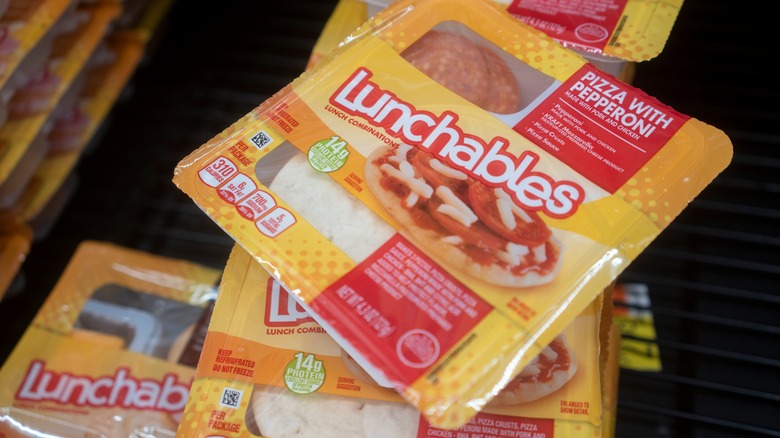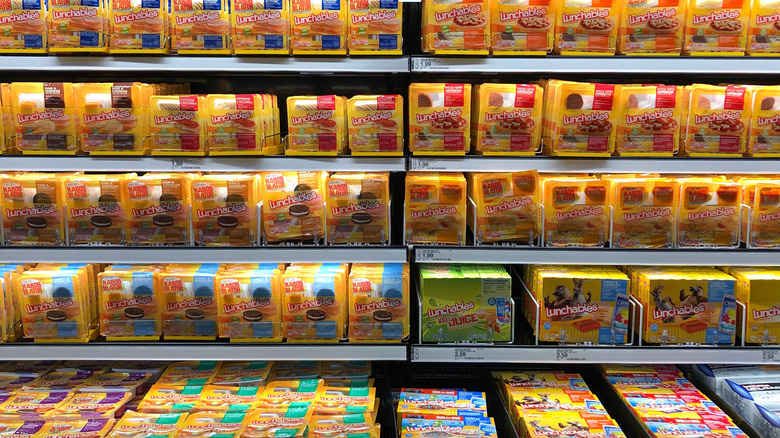Lunchables Weren't Originally Intended For Kids
In the late 1980s, per Eater, Oscar Mayer had a bologna dilemma — they weren't selling enough of it. For decades, bologna had been a go-to budget-friendly option, and during the Great Depression, it was cheap and accessible. When the National School Lunch Program was established in 1946, schools were required to provide affordable or free lunches to students, and bologna fit the bill.
Oscar Mayer, a small company out of Wisconsin, changed bologna forever when it introduced vacuum-sealed packaging. This kept the meat fresher longer than grocery store-sliced options and helped the company expand nationwide by the 1960s. In 1973, a commercial featuring a little boy singing about his bologna having a first name — "It's O.S.C.A.R." — cemented the brand's dominance (via YouTube).
But by the 1980s, Americans were not eating as much bologna as they used to, as health concerns about consuming the meat began to arise (per The Atlantic). In 1988, Oscar Mayer found the key to boosting bologna sales once again — convenience. Pairing it with crackers and cheese as a quick, portable lunch option, the Lunchable was born. Even though Lunchables are widely considered to be for kids, that wasn't the original intention.
People of all ages enjoy Lunchables
According to SFGate, Lunchables were designed to mimic the TV dinners that many American families ate in the 1960s. In fact, these disposable trays were originally designed for busy parents — not kids. "It was seen as a convenience solution to lunch for working mothers, working dads, and the like," Greg Guidotti, head of marketing at Oscar Mayer, told The Atlantic.
But as Oscar Mayer continued market research on the product, they discovered not only that kids had more fun building their own meals, but also that parents appreciated sending their children to school with Lunchables because they felt like they were giving kids a gift to unwrap. Kids were also quicker to adopt flavor varieties that made adults skeptical. Pizza Lunchables, for example, come with squeezable sauce and shredded cheese that is meant to be eaten unmelted. While adults steer clear of the cold pizza stackers, market researchers found that kids loved assembling their own meals regardless of the ingredients.
In the first 12 months on shelves in the late '80s, Lunchables sales pushed $200 million, and by 2017, the lunch kits brought in $1.36 billion. If you're an adult who grew up eating these kits, and still enjoy them to this day, you're not alone — Oscar Mayer estimates that between a quarter and a third of Lunchables sold are enjoyed by adults.

